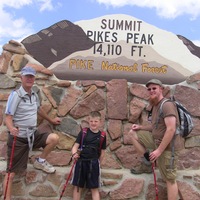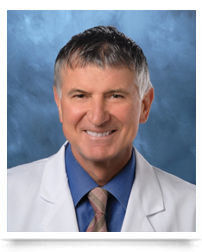Julia Overcomes Aortic Stenosis & Medical Disparity Thanks to Medtronic TAVR
Written By: Adam Pick, Patient Advocate & Author
Medical Expert: Jorge Alvarez, MD, Interventional Cardiologist, Cardiology Clinic of San Antonio
Published: September 20, 2023; This post is sponsored by Medtronic
Aortic stenosis is a life-threatening form of heart disease that is under-diagnosed and under-treated. Sadly, the survival rate is 50% after 24 months for patients diagnosed with symptomatic severe aortic stenosis.1 According to research, only 3.4% of aortic stenosis patients that receive non-invasive transcatheter aortic valve replacement (TAVR) are Hispanic.2
How and why is Medtronic, a leading manufacturer of TAVR devices, taking big steps to treat more Hispanic patients like Mrs. Julia Garcia? Watch this video to find out.
Key Learnings from Julia’s TAVR Success Story
Here are important insights from Julia’s journey to a healthy heart:
- Research studies in the Journal of the American College of Cardiology demonstrate that Hispanic patients with symptomatic severe aortic stenosis are not treated at the same rate as white patients undergoing TAVR.2
- Mrs. Julia Garcia is a 74-year-old Hispanic mother, grandmother, great grandmother, and retired first-grade teacher who struggled with severe aortic stenosis. Julia’s symptoms were dizziness, shortness of breath and extreme fatigue. “I couldn’t walk. I felt dizzy. My life was wreaking havoc on me,” states Julia. “I was willing to go anywhere to save my life.”
- Aortic stenosis is a narrowing of the aortic valve. Over time, aortic stenosis can be dangerous and life-threatening as blood cannot flow from the heart to rest of the body. According to research, 50% of patients with symptomatic severe aortic stenosis will lose their lives if not treated within 24 months.
- Similar to many patients, it was difficult for Julia to obtain an actual diagnosis of aortic stenosis after seeing many medical teams. “We knocked on many doors to find out what could be her solution,” states Jose Garcia, Julia’s husband of 52 years. “I felt helpless. Some would diagnose something and others would diagnose something else.”
- Julia was referred to Dr. Jorge Alvarez, an interventional cardiologist at Cardiology Clinic of San Antonio, who specializes in TAVR. “Julia was one of our classic cases,” states Dr. Alvarez, “Based upon her age and symptoms.”
- TAVR is a minimally invasive procedure in which doctors are able to replace a patient’s defective aortic valve without opening up the chest. “Patients, a majority of the time, go home the next day,” states Dr. Alvarez.
- The Medtronic Evolut TAVR was selected by Dr. Alvarez for Julia’s treatment. “In Julia’s case, we felt that the Medtronic Evolut TAVR valve was the best valve for her because it allowed us to give her the biggest valve possible for her size which long-term we hope will not only show a benefit in durability but we know long-term that they will feel better,” states Dr. Alvarez.
- Dr. Alvarez also discussed the risks associated with the procedure. “Although it’s less invasive, we still have the same risk that you would from any procedure,” states Dr. Alvarez. “Whether it’s the risk of stroke, the risk of heart attack, the risk of death, and the risk of damaging the vessels.”
- After her TAVR procedure, Julia is feeling much better. “I got a new life,” states Julia. “I am turning 75 but feel like I’m 30.”
- In the United States, racial minorities are underrepresented among patients undergoing TAVR. Statistics show only 3.4% of TAVR patients are Hispanic.2
During National Hispanic American Heritage Month, which is September 15 through October 15, Medtronic is driving awareness to healthcare inequity initiatives by promoting Julia’s story through a nationwide public relations campaign. Additionally, Medtronic has been focused on bringing physicians and local leaders together in working groups – across communities – to treat more aortic stenosis patients.
This video recounts one patient’s experience and may not be representative of all patient outcomes. The information presented is the opinion and procedural technique of one physician. It is not intended to constitute medical advice. Physician experience, risks, patient outcomes, and results may vary.
Many Thanks to Julia, Dr. Alvarez and Medtronic!
Many thanks to Julia and Dr. Alvarez for sharing their wonderful TAVR success story with our community!
A special thanks goes out to Medtronic for their commitment to removing barriers that prevent patients from life-saving procedures for aortic stenosis. We are so appreciative of Medtronic’s dedication to advancing valvular therapy and Medtronic’s initiatives to expand treatment for minorities.
Related Links:
- Learn About Medtronic Evolut TAVR
- Get Details About National Hispanic Heritage Month
- Patient Success Story: Mrs. Darian Tymes Gets Medtronic TAVR
Important Reminder: This information is intended only for users in markets where Medtronic products and therapies are approved or available for use as indicated within the respective product manuals. Content on specific Medtronic products and therapies is not intended for users in markets that do not have authorization for use.
Keep on tickin’ Julia!
Adam
P.S. For the deaf and hard of hearing patients in our community, we have provided a video transcript in English and Spanish below.
References:
1 Ross J Jr, Braunwald E. Aortic stenosis. Circulation. July 1968; 38(1 Suppl):61-67.
2 Alkhouli M, Holmes DR Jr, Carroll JD, et al. Racial Disparities in the Utilization and Outcomes of TAVR: TVT Registry Report. JACC Cardiovasc Interv. 2019;12(10):936-948.
Video Transcript in English and Spanish
Julia: My name is Julia Garcia. I’m 74 years old. I live in Laredo, Texas.
Mi nombre es Julia García. Mi edad es de 74 años. Vivo en Laredo, Texas.
Jose: My favorite thing about my wife, Julia is her charm, her personality, the way we get along with each other, a very beautiful love for a very long time. We met 55 years ago, and we’ve been married for 52 years, wherein, we’ve raised 4 children, 10 grandchildren, and 3 great-grandchildren. It’s been a beautiful relationship because we met when we were very young. We’ve enjoyed life a lot.
Mi cosa favorita de mi esposa Julia es su encanto, [00:06:10] su forma de ser, la forma en que nos llevamos los dos, un amor muy bonito de hace mucho tiempo. Nosotros nos conocimos hace 55 años y tenemos de casados 52 años, de los cual hemos criado 4 hijos, 10 nietos y 3 bisnietos. Una bonita relación, porque nos conocimos desde muy jóvenes. Disfrutamos la vida bastante.
Bianca: My mom’s a lovely person, lovely mother, and I’m blessed to be her daughter.
Mi mamá es una persona encantadora, una madre adorable, y soy bendecida por ser su hija.
Zoe: My grandma does my hair, she cooks and she takes me to the park. She’s funny.
Mi abuela me peina, me cocina, y me lleva al parque. Es divertida.
Julia: I have always been surrounded by small children. I was a first-grade teacher. When I moved here,I worked with little children at a daycare. That’s also when I started feeling bad. I couldn’t walk. I would get very tired, and I couldn’t lift heavy things. I felt dizzy. That’s when I realized my life was wreaking havoc on me. I’d think, “Oh God, what will become of me?”
Siempre he convivido con los niños chiquitos. Era maestra de primer año. Vine y tomé un trabajo de daycare, de niños chiquitos. Ahí también fue cuando yo me sentí mal. No podía caminar. Me cansaba por completo y levantar cosas pesadas tampoco. Me sentía como mareada. Entonces ya comencé a sentir esos estragos en mi vida y dije yo, “Oh Dios, ¿qué va a ser de mí?”.
Jose: I felt helpless because I didn’t know what could solve her problem. We knocked on many doors to find out what could be her solution, because some would diagnose something, and others would diagnose something else. We actually didn’t know which path to follow. Then, they detected the problem, which was aortic stenosis. “Now, what do we need to do to solve the problem?” They referred us to Dr. Cigarroa.
Yo, impotente de no saber qué es lo que pudiera resolver su problema. Buscábamos puertas y puertas para saber cuál podía ser su solución, porque unos dicen un diagnóstico, otro, otro diferente. Realmente no sabes qué camino seguir. Nosotros escuchamos las opiniones de los doctores y nos dijeron cuál podría ser la posible solución. Ya se detectó el problema, que era estenosis de la aorta. Ahora, ¿qué hay que hacer para resolver el problema? nos referenciaron con el doctor Cigarroa.
Julia: He noticed that my aorta was damaged and that it was almost closed.
Vio que tenía la vena aorta desgastada, que se me estaba cerrando por completo,
Jose: Dr. Ciggaroa told my wife that there was a possible solution, which was very good and effective. He extensively recommended Dr. Alvarez.
Ciggaroa. Ricardo Junior le dijo a mi esposa que había una posible solución, muy buena y muy efectiva. Él recomendaba al doctor Álvarez ampliamente,
Dr. Alvarez: Aortic stenosis is a kind of fancy way of saying that the valve, which sits on top of the heart over time has become thickened and narrows. After a certain amount of time the heart becomes not very functional or efficient in the way that it beats, and it’s all because that narrowing on top of the heart doesn’t allow the blood to go to the rest of your body. Julia was one of our kind of classic cases who was referred to the structural heart clinic for consideration of TAVR based upon her age, symptoms, and her findings that her cardiologist felt were significant. Essentially, it’s a minimally invasive procedure in which we are able to replace someone’s heart valve without having to open up their chest and replace it surgically. Patients a majority of the time go home the next day.
Estenosis aórtica es una forma elegante de decir que la válvula que se sienta encima del corazón se fue engrosando con el tiempo y ahora se estrecha. Luego de un tiempo, el corazón se vuelve poco funcional o eficiente en cómo palpita. Todo es porque el estrechamiento encima del corazón no permite que la sangre llegue al resto del cuerpo. Julia fue uno de nuestros casos clásicos: alguien que fue derivada a la Clinica de Córazon Estructural para considerar el Reemplazo de la Valvula Aortica Trascateter en base a su edad, sus síntomas y los hallazgos que su cardiólogo encontró importantes. Esencialmente, es un procedimiento mínimamente invasivo mediante el cual podemos reemplazar la válvula cardíaca de una persona sin tener que abrir su pecho y reemplazarla quirúrgicamente. La mayoría de las veces, los pacientes se van a casa al siguiente día.
Julia: I wanted to be saved. I was willing to go anywhere to save my life. When you’re in this condition, it’s simple.
Lo que yo quería es salvarme. Tan sencillo, ya cuando está uno así dices tú.
Dr. Alvarez: After sitting down explaining what we wanted to do, how we were gonna do it, the risks that were associated with it, and really just kind of establishing that trust. I think she put all our faith in me. The TAVR procedure, although it’s less invasive, we still have the same risk that you would from any procedure, whether it’s the risk of stroke, the risk of heart attack, the risk of death, and the risk of damaging the vessels.
Después de tomar asiento les explique lo que queríamos hacer, cómo íbamos a hacerlo, y los riesgos asociados, y después de establecer confianza, creo que ella puso toda su fe en mi. Si bien es menos invasivo, el Reemplazo de la Válvula Aórtica Transcateter sigue teniendo el mismo riesgo que tendría cualquier otro procedimiento, ya sea riesgo de que haya un embolio cerebral o un ataque al corazón, riesgo de muerte y riesgo de dañar las arterias.
Julia: The truth is that I wasn’t afraid at all. I was more afraid of what I had been going through. I said, “I have the best professionals. I’m in good hands.”
Le voy a decir la mera verdad, no sentí nunca miedo. Más miedo sentía lo que me estaba pasando. Dije yo, “Estoy en lo mejor. Estoy en las mejores manos”.
Dr. Alvarez: In Julia’s case, we felt that the Medtronic Evolut TAVR valve was the best valve for her ’cause it allowed us to give her the biggest valve possible for her size, which long-term we hope will not only show a benefit in durability, but we know long-term that they will feel better and it allows them to do the things that she’s doing now.
En el caso de Julia, sentimos que la válvula, Medtronic Evolut TAVR era la mejor válvula para ella porque nos permitía darle la válvula más grande posible para su tamaño. A largo plazo, esperamos que no solo muestre beneficios en cuanto a su durabilidad, sino que sabemos que ella se sentirá mejor a largo plazo. Tambien permite que ella haga las cosas que hace ahora.
Julia: The surgery took around two or three hours, and then they took me to my room. After that, I felt very good.
Duré como unas dos o tres horas donde me operaron y luego ya me pasaron a mi cuarto. Yo me sentí luego muy bien, muy bien.
Bianca:She’s another person. She said, I’m gonna turn 75 and I feel like 30. So we are very thankful and blessed. I have my mom again.
Ella es una persona nueva. Dijo, “Voy a cumplir 75, pero me siento de 30”. Estamos muy agradecidos y somos muy bendecidos. Tengo a mi mamá de nuevo.
Jose: There has been an extraordinary change in her life. Even our relationship has gotten better.
Ha habido un cambio extraordinario en su vida. Sobre todo, la relación ya es hasta más mejor.
Julia: We really like dancing and, let’s say, I got a new life.
Nos gustan mucho los bailes y haga de cuenta que me dieron vida nueva.
Dr. Alvarez: Today, when I saw her and her smile, I mean, she just, she really looked like a different person. She couldn’t finish a sentence when she would talk before. She wouldn’t stop talking at her follow up visit. She was full of life again. And, uh, just proud to have been part of that process.
Hoy, cuando la vi a ella y a su sonrisa de verdad se veía como una persona diferente. Antes, cuando hablaba, no podía terminar sus oraciones. En sus visitas de control, no paraba de hablar. Estaba llena de vida de nuevo, y estoy muy orgulloso de haber sido parte de ese proceso.
Dr. Alvarez: When Julia’s case, the referral early on by her cardiologist, once he recognized what she needed was critical. Had it been delayed or ignored for much longer, we may not be talking about the positive impact we had on her.
En el caso de Julia y la derivación temprana por parte de su cardiólogo, una vez que el reconoció lo que ella necesitaba, eso fue crítico. Si se hubiera demorado o ignorado el problema por más tiempo, tal vez no estaríamos hablando hoy del impacto positivo que tuvimos en ella.
Julia: I’ll never forget that moment when I looked at the doctor and told him, “Doctor, please save me.” I think the doctor heard what I had to say, and God heard my prayers.
Esos momentos nunca se me van a olvidar, en el cual yo puse mi mirada en el doctor y dije, “Doctor, sálveme”. Por lo máximo, yo creo que me oyó, me oyó Dios.
Jose: Thank God, it turned out very well. Now, you can see that she’s very confident and strong compared to the way she was before. That’s an extremely radical change from one day to another.
Gracias a Dios salió muy bien. Usted la ve ahora muy segura, muy fuerte lo que ahora está a como era antes. Ese es el cambio muy radical de ayer a ahora.
Julia: I’m amazed because I can do anything I want to. I’m living a new life, and I really recommend fighting for it.
Estoy maravillada porque hago todo. Es una realidad en la que estoy viviendo, en la cual yo recomiendo con los ojos cerrados que




